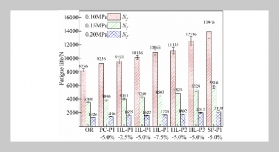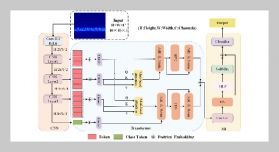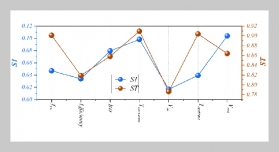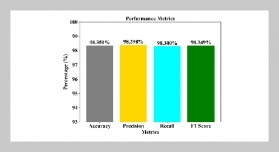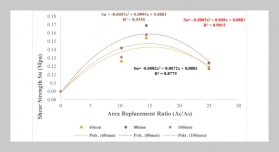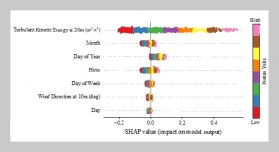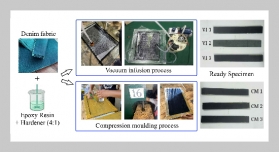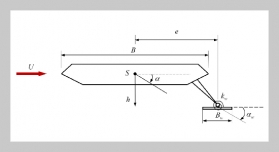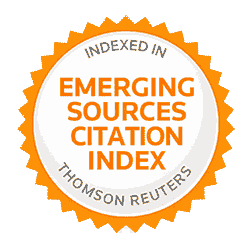- [1] C. Plati, (2019) “Sustainability factors in pavement ma�terials, design, and preservation strategies: A literature review" Construction and Building Materials 211: 539–555.
- [2] M. Nikoo, F. T. Moghadam, and Ł. Sadowski, (2015) “Prediction of concrete compressive strength by evolution�ary artificial neural networks" Advances in Materials Science and Engineering 2015:
- [3] F. Masoumi, S. Najjar-Ghabel, A. Safarzadeh, and B. Sadaghat, (2020) “Automatic calibration of the ground�water simulation model with high parameter dimensional�ity using sequential uncertainty fitting approach" Water Supply 20: 3487–3501.
- [4] J.-S. Chou and A.-D. Pham, (2013) “Enhanced artificial intelligence for ensemble approach to predicting high per�formance concrete compressive strength" Construction and Building Materials 49: 554–563.
- [5] K. Ozawa, K. Maekawa, and H. Okamura, (1992) “Development of high performance concrete" Journal of the Faculty of Engineering, University of Tokyo, Series B;(Japan) 41:
- [6] B. A. Graybeal. Material property characterization of ultra-high performance concrete. 2006.
- [7] A. Azizi, A. Y. B. Ali, and L. W. Ping, (2015) “Mod�elling production uncertainties using the adaptive neuro�fuzzy inference system" South African Journal of In�dustrial Engineering 26: 224–234.
- [8] B. Cetisli, (2010) “Development of an adaptive neuro�fuzzy classifier using linguistic hedges: Part 1" Expert Systems with Applications 37: 6093–6101.
- [9] M. R. Akbarzadeh, H. Ghafourian, A. Anvari, R. Pourhanasa, and M. L. Nehdi, (2023) “Estimating Compressive Strength of Concrete Using Neural Electro�magnetic Field Optimization" Materials 16: 4200.
- [10] I.-C. Yeh, (1998) “Modeling of strength of high�performance concrete using artificial neural networks" Cement and Concrete research 28: 1797–1808.
- [11] T.-P. Chang, F.-C. Chuang, and H.-C. Lin, (1996) “A mix proportioning methodology for high-performance con�crete" Journal of the Chinese Institute of Engineers 19: 645–655.
- [12] V. Afroughsabet, L. Biolzi, and T. Ozbakkaloglu, (2016) “High-performance fiber-reinforced concrete: a re�view" Journal of materials science 51: 6517–6551.
- [13] S. Fallah and M. Nematzadeh, (2017) “Mechanical properties and durability of high-strength concrete con�taining macro-polymeric and polypropylene fibers with nano-silica and silica fume" Construction and build�ing materials 132: 170–187.
- [14] B. Sadaghat, G. G. Tejani, and S. Kumar, (2023) “Pre�dict the Maximum Dry Density of soil based on Individual and Hybrid Methods of Machine Learning" Advances in Engineering and Intelligence Systems 2:
- [15] P. G. Asteris, P. B. Lourenço, P. C. Roussis, C. E. Adami, D. J. Armaghani, L. Cavaleri, C. E. Chalioris, M. Hajihassani, M. E. Lemonis, and A. S. Mo�hammed, (2022) “Revealing the nature of metakaolin�based concrete materials using artificial intelligence tech�niques" Construction and Building Materials 322: 126500.
- [16] G. Habert. “10 - Assessing the environmental impact of conventional and ‘green’ cement production”. In: Eco-efficient Construction and Building Materials. Ed. by F. Pacheco-Torgal, L. Cabeza, J. Labrincha, and A. de Magalhães. Woodhead Publishing, 2014, 199–238. DOI: https: //doi.org/10.1533/9780857097729.2.199.
- [17] B. Sankar and P. Ramadoss, (2022) “Experimental and statistical investigations on alccofine based ternary blended high-performance concrete" International Jour�nal of Engineering 35: 1629–1640.
- [18] H. U. Ahmed, A. S. Mohammed, and A. A. Mo�hammed, (2022) “Proposing several model techniques including ANN and M5P-tree to predict the compres�sive strength of geopolymer concretes incorporated with nano-silica" Environmental Science and Pollution Research 29: 71232–71256.
- [19] B. Sankar and P. Ramadoss, (2023) “Modeling the com�pressive strength of high-performance concrete containing metakaolin using distinctive statistical techniques" Re�sults in Control and Optimization: 100241.
- [20] N. S. Piro, A. S. Mohammed, and S. M. Hamad, (2023) “Evaluate and predict the resist electric current and com�pressive strength of concrete modified with GGBS and steelmaking slag using mathematical models" Journal of Sustainable Metallurgy 9: 194–215.
- [21] S. Liao, G. Li, J. Li, D. Jiang, G. Jiang, Y. Sun, B. Tao, H. Zhao, and D. Chen, (2020) “Multi-object intergroup ges�ture recognition combined with fusion feature and KNN algorithm" Journal of Intelligent Fuzzy Systems 38: 2725–2735.
- [22] M. Nematzadeh and S. Fallah-Valukolaee, (2017) “Ef�fectiveness of fibers and binders in high-strength concrete under chemical corrosion" Structural Engineering and Mechanics, An Int’l Journal 64: 243–257.
- [23] P. Rashiddadash, A. A. Ramezanianpour, and M. Mahdikhani, (2014) “Experimental investigation on flex�ural toughness of hybrid fiber reinforced concrete (HFRC) containing metakaolin and pumice" Construction and Building Materials 51: 313–320.
- [24] A. Behnood, J. Olek, and M. A. Glinicki, (2015) “Pre�dicting modulus elasticity of recycled aggregate concrete using M5 model tree algorithm" Construction and Building Materials 94: 137–147.
- [25] E. Avci, (2008) “Comparison of wavelet families for tex�ture classification by using wavelet packet entropy adap�tive network based fuzzy inference system" Applied Soft Computing 8: 225–231.
- [26] M. Buragohain and C. Mahanta, (2008) “A novel ap�proach for ANFIS modelling based on full factorial design" Applied soft computing 8: 609–625.
- [27] A. Sengur, (2008) “Wavelet transform and adaptive neuro-fuzzy inference system for color texture classifi�cation" Expert Systems with Applications 34: 2120– 2128.
- [28] A. Sengur, (2008) “An expert system based on principal component analysis, artificial immune system and fuzzy k�NN for diagnosis of valvular heart diseases" Computers in biology and medicine 38: 329–338.
- [29] A. S. Abdullah, F. A. Essa, and Z. M. Omara, (2021) “Effect of different wick materials on solar still perfor�mance–a review" International Journal of Ambient Energy 42: 1055–1082.
- [30] F. A. Essa, M. A. Elaziz, and A. H. Elsheikh, (2020) “An enhanced productivity prediction model of active solar still using artificial neural network and Harris Hawks op�timizer" Applied Thermal Engineering 170: 115020.
- [31] F. A. Essa, A. H. Elsheikh, A. A. Algazzar, R. Sathya�murthy, M. K. A. Ali, M. A. Elaziz, and K. H. Salman, (2020) “Eco-friendly coffee-based colloid for performance augmentation of solar stills" Process Safety and Envi�ronmental Protection 136: 259–267.
- [32] A. Eid, S. Kamel, A. Korashy, and T. Khurshaid, (2020) “An enhanced artificial ecosystem-based optimiza�tion for optimal allocation of multiple distributed genera�tions" IEEE Access 8: 178493–178513.
- [33] A. A. Ewees, L. Abualigah, D. Yousri, A. T. Sahlol, M. A. A. Al-Qaness, S. Alshathri, and M. A. Elaziz, (2021) “Modified artificial ecosystem-based optimization for multilevel thresholding image segmentation" Mathe�matics 9: 2363.
- [34] A. Tharwat, (2019) “Parameter investigation of support vector machine classifier with kernel functions" Knowl�edge and Information Systems 61: 1269–1302.
- [35] A. Tharwat, A. E. Hassanien, and B. E. Elnaghi, (2017) “A BA-based algorithm for parameter optimization of sup�port vector machine" Pattern recognition letters 93: 13–22.
- [36] A. F. Mirza, M. Mansoor, and Q. Ling, (2020) “A novel MPPT technique based on Henry gas solubility optimization" Energy Conversion and Management 225: 113409.
- [37] D. Mohammadi, M. A. Elaziz, R. Moghdani, E. Demir, and S. Mirjalili, (2021) “Quantum Henry gas solubility optimization algorithm for global optimization" Engineering with Computers: 1–20.
- [38] N. Pholdee, S. Bureerat, S. M. Sait, and V. Patel, (2020) “The Henry gas solubility optimization algorithm for opti�mum structural design of automobile brake components":
- [39] E. Turajlic, E. Buza, and A. Akagic. “Honey Badger Algorithm and Chef-based Optimization Algorithm for Multilevel Thresholding Image Segmentation”. In: IEEE, 2022, 1–4.
- [40] B. Abdollahzadeh, F. S. Gharehchopogh, and S. Mir�jalili, (2021) “Artificial gorilla troops optimizer: a new nature-inspired metaheuristic algorithm for global opti�mization problems" International Journal of Intelli�gent Systems 36: 5887–5958.
- [41] I. Ahmadianfar, O. Bozorg-Haddad, and X. Chu, (2020) “Gradient-based optimizer: A new metaheuris�tic optimization algorithm" Information Sciences 540: 131–159.
- [42] M. A. Elaziz, D. Oliva, and S. Xiong, (2017) “An im�proved opposition-based sine cosine algorithm for global optimization" Expert Systems with Applications 90: 484–500.
- [43] H. Yin, S. Liu, S. Lu, W. Nie, and B. Jia, (2021) “Pre�diction of the compressive and tensile strength of HPC concrete with fly ash and micro-silica using hybrid algo�rithms" Advances in Concrete Construction 12: 339.
- [44] L. Huang, W. Jiang, Y. Wang, Y. Zhu, and M. Afzal, (2022) “Prediction of long-term compressive strength of concrete with admixtures using hybrid swarm-based algo�rithms" Smart Structures and Systems, An Interna�tional Journal 29: 433–444.
- [45] H. Cheng, S. Kitchen, and G. Daniels, (2022) “Novel hybrid radial based neural network model on predicting the compressive strength of long-term HPC concrete" Ad�vances in Engineering and Intelligence Systems 1:
- [46] H. Zhang, X. Gu, F. Zhang, and L. Zhang, (2023) “De�velopment of a radial basis neural network for the pre�diction of the compressive strength of high-performance concrete" Multiscale and Multidisciplinary Model�ing, Experiments and Design: 1–14.
- [47] P. Weng, J. Xie, and Y. Zou, (2023) “Compressive strength prediction of admixed HPC concrete by hybrid deep learning approaches" Journal of Intelligent Fuzzy Systems: 1–14.



